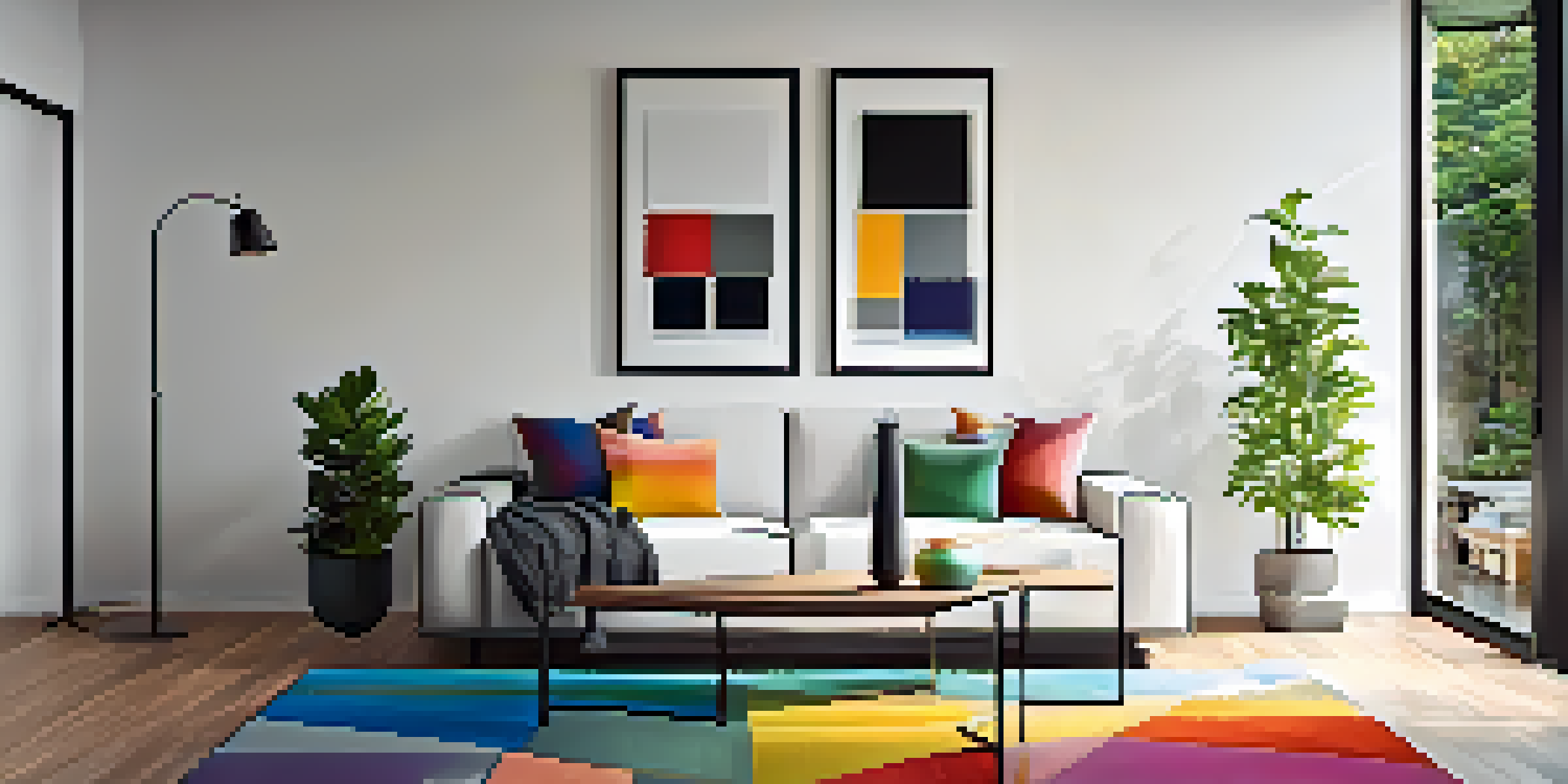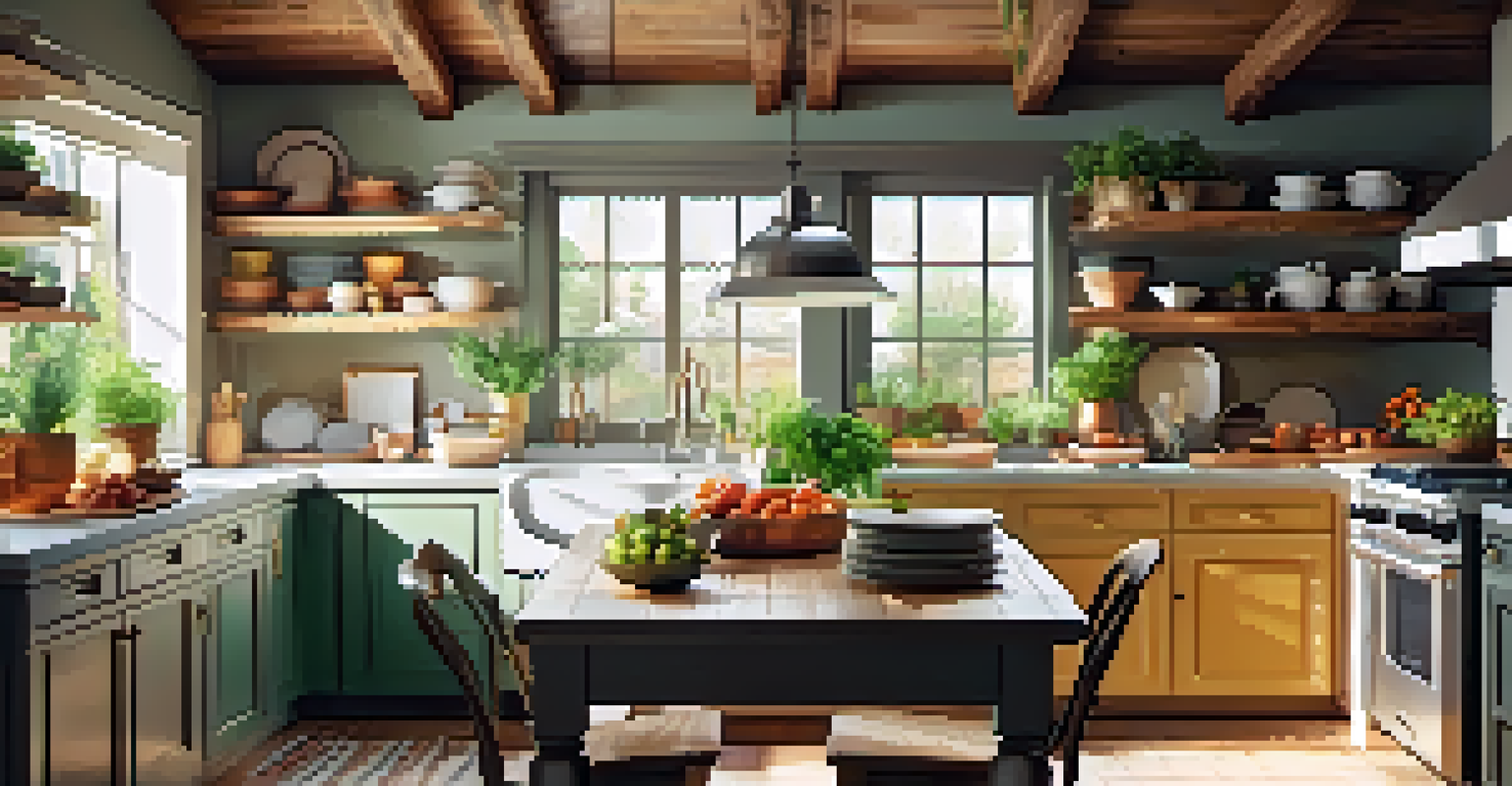Identifying Your Renovation Style: A Homeowner's Guide

Understanding the Importance of Renovation Style
When it comes to home renovations, knowing your style is crucial. Your renovation style not only reflects your personal taste but also influences the overall vibe of your home. Whether you lean towards modern minimalism or cozy cottage aesthetics, understanding your style can guide your decisions and create a cohesive look.
Home is not a place, it's a feeling.
Imagine walking into a home that feels like a curated art gallery versus one that feels disjointed and chaotic. That’s the power of identifying your renovation style. It allows you to make choices that resonate with you and ensure every element of your home tells a story.
Moreover, a well-defined style can enhance your home’s value. Buyers are often drawn to homes with a clear aesthetic, making your renovations an investment rather than just an expense.
Exploring Popular Renovation Styles
There are numerous renovation styles to explore, each with its own charm and characteristics. From the sleek lines of contemporary design to the rustic appeal of farmhouse style, understanding these categories can help you pinpoint where your tastes lie. Picture each style as a different flavor of ice cream; you might love chocolate but also appreciate a scoop of mint.

Take the time to research and visualize each style through online platforms or home improvement shows. For example, the industrial style often features exposed brick and metal accents, giving a chic urban vibe, while bohemian style embraces vibrant colors and eclectic decor.
Know Your Renovation Style
Identifying your renovation style helps create a cohesive home aesthetic and enhances its value.
By familiarizing yourself with these styles, you can begin to identify which elements speak to you most. This exploration is not only fun but also essential in shaping your renovation journey.
Assessing Your Current Space and Its Potential
Before diving into renovations, take a moment to assess your current space. Walk through your home and make note of its strengths and weaknesses. This evaluation will help you understand what aspects you want to keep and what needs a makeover. Think of it as a personal inventory of your home’s personality.
The details are not the details. They make the design.
Consider factors like natural light, layout, and existing features that might influence your renovation style. For instance, a sun-drenched room might lend itself well to a bright and airy coastal style, while a cozy nook could be perfect for a warm, traditional aesthetic.
By recognizing your space's potential, you can make informed decisions that align with your preferred style, ensuring your renovations enhance rather than detract from what makes your home unique.
Gathering Inspiration: Where to Look
Inspiration can be found in the most unexpected places, but there are a few tried-and-true sources that homeowners often turn to. Websites like Pinterest and Houzz are treasure troves of design ideas, allowing you to create mood boards that capture your vision. Think of these platforms as a digital scrapbook where you can collect images that resonate with your style.
Additionally, visiting local showrooms or open houses can provide a tangible sense of various styles. Seeing materials and layouts in person can spark ideas that you might not have considered before. It’s like tasting different dishes at a restaurant before deciding what to order.
Assess Your Space's Potential
Evaluating the strengths and weaknesses of your current home guides informed renovation decisions.
Don’t forget to document your findings. Create a visual reference that showcases colors, materials, and designs that inspire you, helping you stay focused during your renovation journey.
Defining Your Budget and Renovation Goals
Every renovation begins with a clear budget and set goals. Understanding your financial limitations will help you prioritize what’s most important in your renovation. It’s similar to planning a vacation—deciding on a budget helps determine where you can go and what you can do.
Break down your budget into categories such as materials, labor, and unexpected expenses. This method not only provides clarity but also helps you allocate funds effectively. Remember, it’s wise to set aside a portion for surprises, as renovations often come with their share of unexpected twists.
By defining your goals alongside your budget, you can create a roadmap for your renovation that aligns with your style, ensuring your vision remains intact even during the process.
Choosing the Right Materials and Colors
Materials and colors are the building blocks of your renovation style. Selecting the right combinations can drastically enhance the aesthetic you’re aiming for. Think of it as choosing the right ingredients for a recipe; the final dish depends on the quality and harmony of what you use.
Consider how different materials reflect your style. For example, reclaimed wood can add a rustic touch to a modern space, while sleek glass and metal can elevate a traditional setting. Test paint samples on your walls to see how they interact with your lighting at different times of the day.
Set a Clear Budget and Goals
Establishing a budget and clear goals provides a roadmap for your renovation journey, ensuring alignment with your style.
This step is not just about aesthetics; it’s also about functionality. Durable materials can save you money in the long run, ensuring your beautifully renovated space remains intact and stylish for years to come.
Working with Professionals vs. DIY: Making the Right Choice
Deciding whether to hire professionals or take the DIY route is a pivotal moment in your renovation journey. Each option has its benefits; professionals bring expertise and experience, while DIY allows for personal touch and cost savings. Imagine it like choosing between a guided tour and exploring on your own—both can lead to rewarding experiences.
If you opt for professionals, ensure you communicate your style and goals clearly to them. Collaboration can translate your vision into reality, making the renovation process smoother. However, if you’re a hands-on person, tackle smaller projects that align with your skills and comfort level.

Ultimately, the choice depends on your budget, time, and confidence in executing the renovation. Whichever path you choose, remember that your home should reflect who you are and what you love.